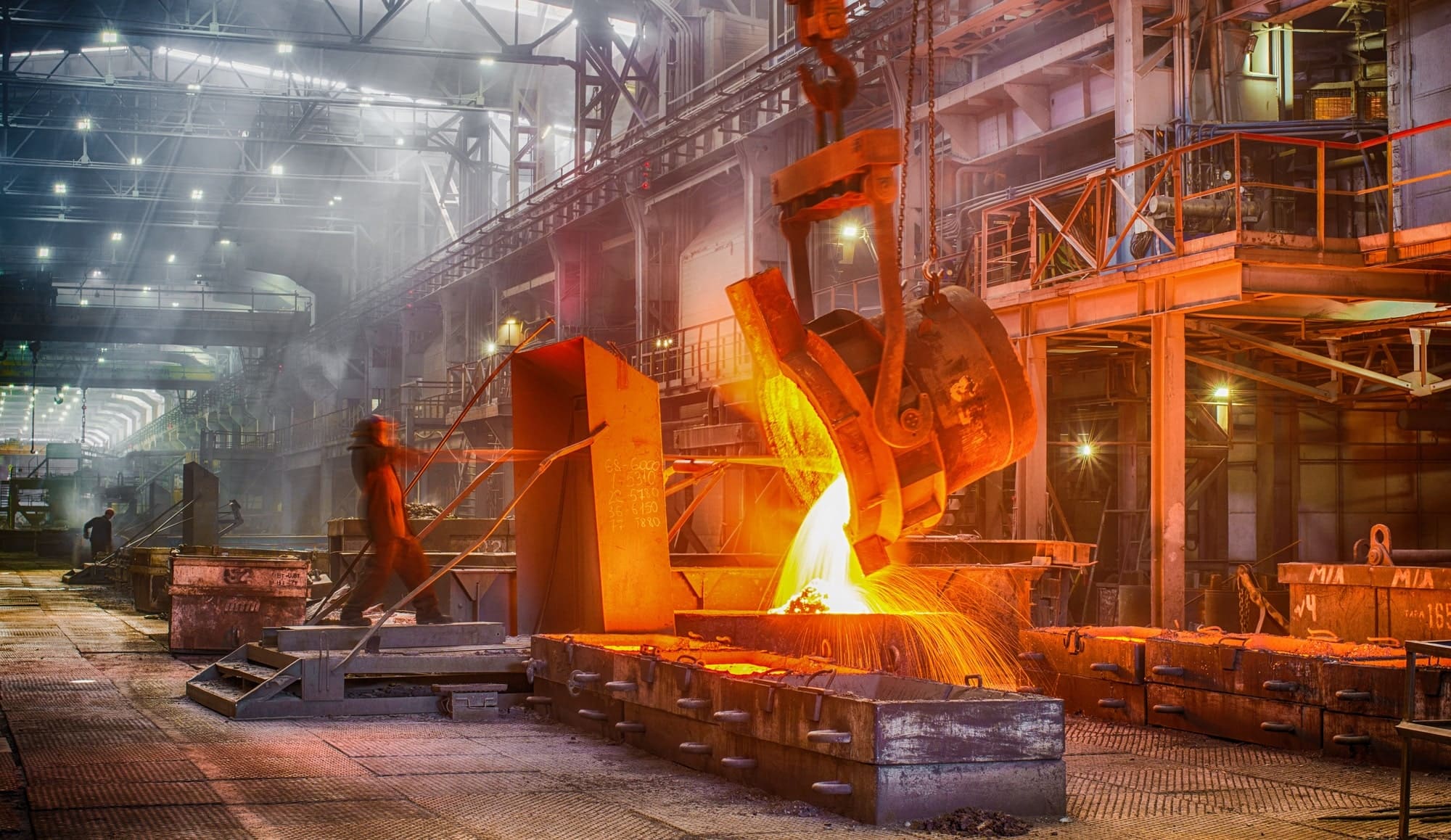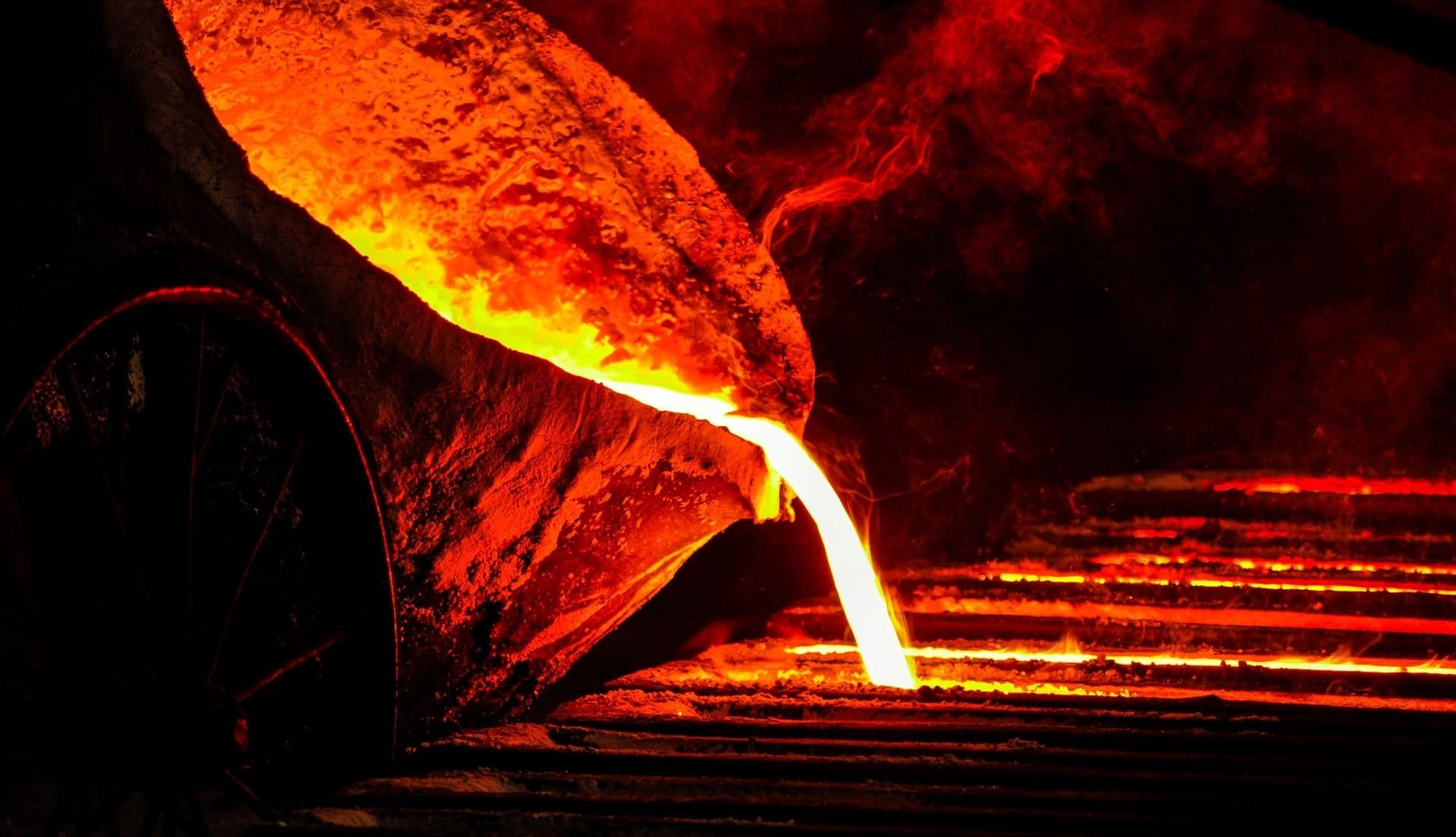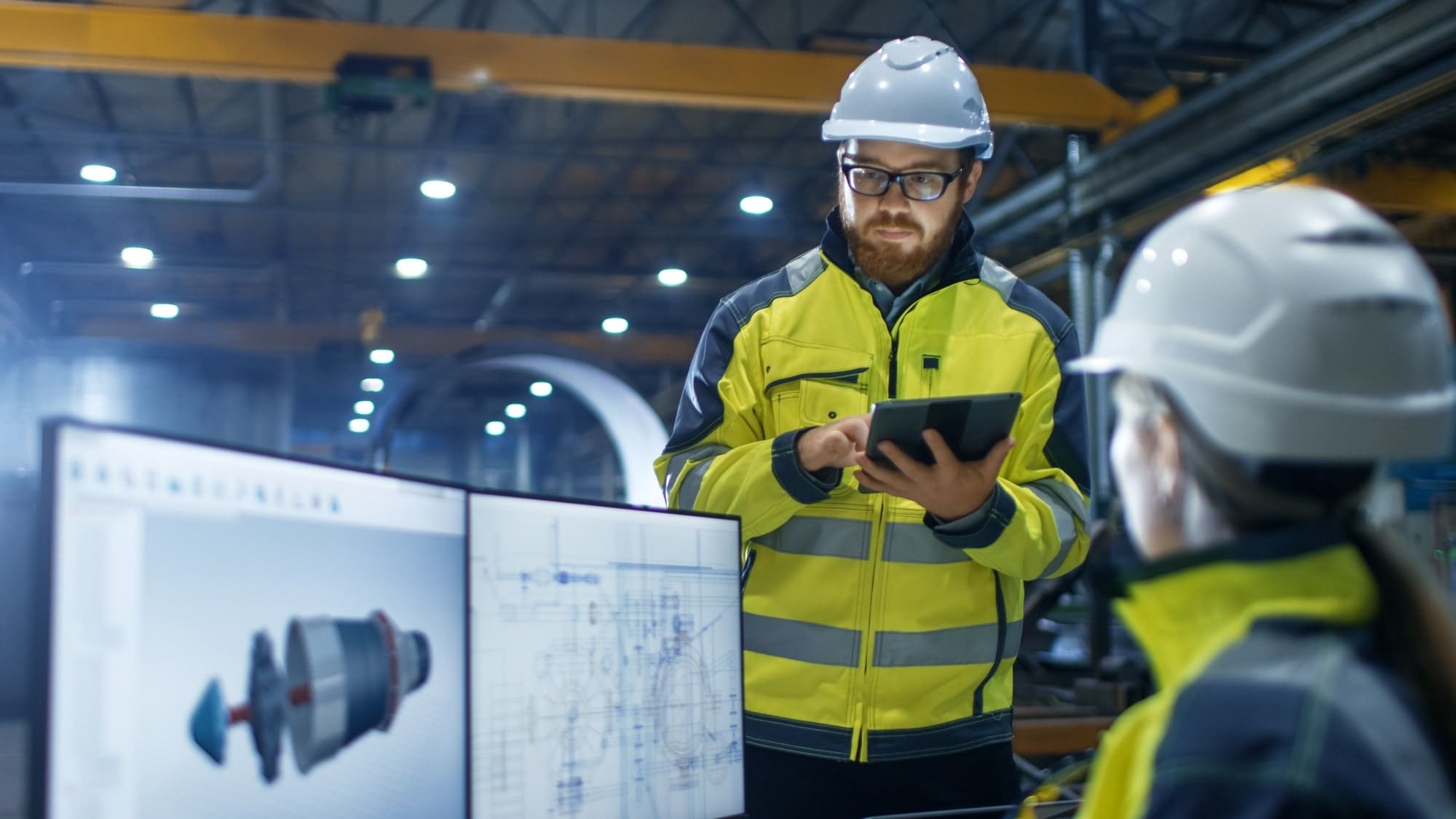Often, ore processing, sinter and blast furnace processes, steelmaking and rolled steel production cannot be performed without natural gas. In addition, natural gas sometimes saves steelmakers in emergency situations.
In 2015-17, Metinvest Group’s Avdiivka Coke, which is Europe’s largest coke plant, was on the brink of shutdown several times. Due to the fierce fighting in Eastern Ukraine’s Donbas region, the enterprise lost power more than 10 times. Coke production was halted, which also stopped the generation of coke oven gas, a by-product. Why was this important, especially in winter?
Coke oven gas is burned to heat coke oven batteries. These are huge structures made of special refractory bricks where coal coking takes place. If the ovens cool down, the brick walls will crack, and the ovens will not be able to operate. Building a new coke oven battery entails an investment of hundreds of millions of dollars. At that time, Avdiivka Coke was saved by natural gas. This expensive fuel was burned to heat the ovens and prevent irreversible damage. “[We need] about 18,000 cubic metres [of natural gas] per hour in order to preserve the city of Avdiivka and Avdiivka Coke, and prevent a humanitarian and environmental disaster,” Musa Magomedov, who then headed the enterprise, wrote on Facebook in early 2017.
Fortunately, that difficult period has passed, and now natural gas is used in the Ukrainian steel industry only as a part of the technological process.
Natural gas, which is almost entirely composed of methane, is one of the most important fuel types: hydrocarbons. It spontaneously combusts at a temperature of 650° С, and its combustion temperature in oxygen reaches 2,100-2,020° С.
For domestic purposes, it is used to heat homes and water, often used in the gas stoves and ovens found in kitchens. On an industrial scale, it is used to produce mineral fertilisers and plastics, as well as to generate power and heat at thermal power plants and electric power stations. As we have already seen, it also has applications in the mining and metallurgical industry.

IORM and pig iron: sintering and heating
Why is gas required in ore production? It would seem that you simply need to dig deeper, crush the rock, extract the iron ore and lift it to the surface using a conveyor belt. The scheme works in this simplified format only up to a certain point: until you have to think about the practical use of the extracted mineral. At this point, it turns out that the iron ore from the quarry or mine is not yet suitable for further use in blast furnaces or steelmaking furnaces. There is practically no iron ore left anywhere in the world of a high enough grade to be used without further processing.
The mined material needs to be enriched (to increase its iron content), crushed to the desired grain size and prepared for smelting. The two main types of prepared iron ore raw materials (IORM) used in the Ukrainian steel industry are sinter and pellets.
The sinter is produced at sinter plants, where a specially prepared mixture (blend), which consists of iron ore, concentrate, fluxes, sludge and solid fuel (coke), is mixed to specific proportions, burned and sintered by heating it externally using natural gas combustion products.
However, such raw materials have several disadvantages, primarily related to transportation. Sinter is a very fragile material. If it is produced at ore enrichment plants, it can crumble during long-term transportation. Therefore, almost all Ukrainian sinter plants have been built at the site of the steelmaker. On the other hand, transportation of iron ore concentrate and other raw materials from miners to steelmakers is also very costly, partly due to the loss of some of the product during transportation.
At the beginning of the 20th century, a scheme for solving this issue was proposed, which became widespread by the latter half of the century. This is the production of pellets. Pelletising and indurating equipment is installed directly at the ore enrichment plants to obtain solid, durable balls from the blend with an iron content of 63-68% . They can be transported over long distances without loss of quality. This simplifies the export of IORM. While the consumption of pellets within Ukraine is also growing, blast furnaces must first be upgraded to use this raw material.
Natural gas or other fuels are also used in the production of pellets. In pelletising machines, the blend is spherical. The obtained balls are dried and then burned (sintered) at a temperature of 1,200-1,300° C.
At the end of the 20th century, inventors took things a step further, introducing the direct reduction or hot briquetting process to the steel industry. In this case, nearly pure iron is produced. Its content in the briquette exceeds 90%. The material is in fact a substitute for pig iron and steel scrap.
The most common direct reduction technologies use practically no solid fuels: only gas. Briquetting is carried out at a temperature of around 700° C. There are several proprietary processes, including Midrex, HYL III and Purofer, among others. But not all countries with modern steelmaking industries have access to natural gas. As the cost of natural gas has grown, gas-free direct reduced iron processes have been developed. The ITMk3 process is probably the most advanced form of this technology. Its Japanese inventors figured out how to obtain a product with 96-98% iron from crushed ore and non-coking coal by sintering at a temperature of 1,350-1,400° C. Due to its specific shape, the inventors called it “iron nuggets”. While Ukrainian ore enrichment plants have also studied the possibility of introducing this technology, the traditional steelmaking process is still more profitable for them.

Reducing gas consumption in steelmaking
Iron ore raw materials – sinter and pellets – are the main components for ironmaking. IORM, coke and other materials are charged into blast furnaces. They are smelted at a high temperature of up to 2,100° C, which is achieved by burning fuel (coke, natural gas, pulverised coal or a combination thereof). In addition, natural gas, predominantly composed of methane, together with heated air, is used to purge the charge. This improves the iron reduction process. In recent decades, technologies have been actively developed that make it possible to replace this expensive raw material with cheaper alternatives in the blast furnace production process. One key area is the use of pulverised coal injection, in which a specially prepared mixture of finely dispersed steam coal is fed into the furnace. Pulverised coal makes it possible to completely forego natural gas in this steelmaking process.
In the steelmaking process, natural gas has also long been the main source of heat for melting pig iron into steel. It was this fuel that supported combustion in open-hearth furnaces. However, after steelmakers all over the world switched to basic oxygen furnaces and electric arc furnaces, the consumption of natural gas in this metallurgical process fell sharply. Today, high temperatures in steelmaking are achieved by blowing liquid iron with oxygen in converters (chemical reactions are accompanied by heat release) or by using an electric arc in arc furnaces.
Rolled products: almost gas-free
While the rolling process today consumes a minimum amount of natural gas, 30-40 years ago the use of the fuel was more prominent. Indeed, before the introduction of the continuous casting process, liquid steel was poured into ingots, which had to be rolled into semi-finished products on blooming mills and only after that sent to plate and section rolling shops. Therefore, the ingots were either soaked or heated in special soaking pits, where a high temperature was maintained with gas burners, as well as with a hot refractory lining of the walls.
With the widespread introduction of continuous casting technology, intermediate processing – slabbing and blooming – are becoming a thing of the past. As this has happened, the amount of gas consumed to heat ingots has been reduced.
At today’s rolling mills, ready-made continuously cast slabs, blooms, merchant squares and rounds are heated to produce finished products on plate or section mills by rolling. As a source of heat for these furnaces, in addition to fossil fuels, blast furnace and coke oven gas and even electricity are used.

High gas price and carbon footprint
Steelmakers have long thought about cutting natural gas costs. For example, at some enterprises, coke oven and blast furnace gases were reused, which are formed in the corresponding technological processes. But these were only a few cases, especially on the territory of modern Ukraine, and this concerned various auxiliary processes.
Indeed, in the post-Soviet planned economy, the factors of ecology and market pricing were all but non-existent for a long time. But following the major wave of privatisations and the appearance of private business in the mining and metallurgical industry, a lot has changed. The processes of improving energy and resource efficiency have also intensified throughout the world.
Therefore, miners and steelmakers have begun to invest in energy-saving technologies, which also have a positive environmental impact. These solutions sometimes take unusual forms. For example, some iron ore enrichment works use not gas or coal (non-renewable natural resources) for pellet firing, but briquettes from sunflower husks. This renewable fuel is able reach the same combustion temperatures. Ukraine is one of the world’s leaders in sunflower cultivation and sunflower oil export, so it has no problem supplying husks.
In addition to the cost savings, an enterprise that uses renewable resources can reduce its carbon footprint.
A second and no less important reason for finding an alternative to natural gas was its high cost. In blast-furnace production, it has effectively been replaced by pulverised coal injection (PCI). The PCI process helps to save tens of thousands of US dollars per tonne of pig iron. It can be effectively implemented in large blast furnaces, as has already been done at Metinvest Group’s steelmakers (Ilyich Steel, Azovstal and Zaporizhstal).
The importance of natural gas in the steel industry is declining with each passing year. This is primarily due to the introduction of new resource-saving technologies. In the future, the industry will be even less dependent on this fuel. For example, when introducing compact strip production plants, steelmakers forego not only blooming, but also rolling mills in their classical sense. In such workshops, finished rolled steel is immediately produced from liquid steel, which requires practically no additional heating at the various processing stages (and if it does, electric induction furnaces are used for this).
There is also an increasing demand for environmentally friendly products. Europe, in particular, is considering introducing new legislation to incentivise industry to reduce its consumption of non-renewable natural resources such as gas, oil and ore. Perhaps, in the distant future, the gas pipelines at mining and metallurgical enterprises will remain only as a safety net in emergency situations, or else become museum exhibits reminiscent of a bygone era.
